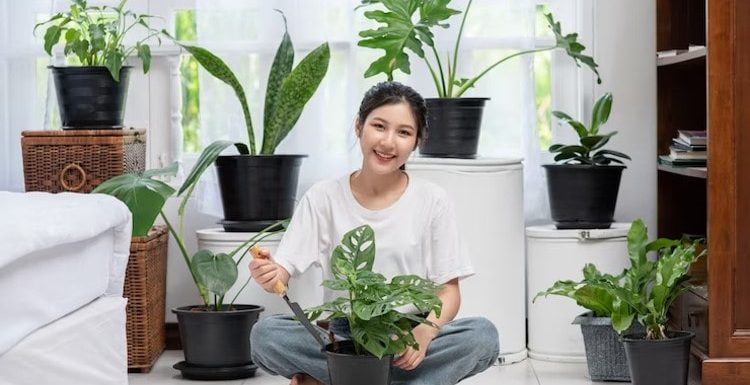
There are no solid rules as to what plants should be strictly considered traditional or contemporary. While there are indeed certain plants that, when properly arranged, can strikingly create the illusion of a pure contemporary or traditional landscape. Many still have misguided biases about certain plants.
To have a perfectly manicured or harmonious arrangement of plants in a garden—you should not concentrate entirely on the individual attributes of plants. Rather, you should shift your focus in the overall landscape design or style that you’d like to achieve. Some common plants that are deemed as typically fitting only one particular style are in reality, versatile—especially when properly placed.
Plant arrangement in the garden is often overwhelming, so save yourself some trouble by making it less complicated. Try changing your perspective when it comes to this. Further in this article are some plants that are usually seen as contemporary or traditional—but actually, work well either way.
Differences: Traditional vs Contemporary
But before we discuss these most common plants that are often deemed too traditional or too contemporary—let’s look at the main differences between these styles.
To start with, the traditional style tends to be a well-defined landscape, which is usually designed around a series of garden rooms. Although there are no rules to what you should plant in a traditional garden, some plants suit well with this style like abundant spring bulbs and flowering shrubs. Also, bright-colored perennial borders contrasting clipped hedges as well as meticulously tended lawns are usually featured in a traditional garden.
Moreover, traditional usually have outdoor living elements like an oversized chessboard, a fire pit, or a maze garden.
On the other hand, the contemporary style relies on the repetition of plants and motifs for continuity. Sometimes confused or often interchangeably identified as modern style, which is more of hard-edged minimalism. In a contemporary landscape, it’s also uncluttered yet with adjoining architecture and a continuous line of plants or features lots of space around plants to be viewed as individual elements.
Contemporary landscape design usually has fences or walls as a backdrop. It isn’t reliant with color too but focuses more on visually interesting plants (or elements). It usually contains foliage-focused plants, ornamental grasses, textural plants, and succulent plants.
Pleached Trees
Pleaching is one of the most defining aspects of 18th-century design, commonly used as a traditional English garden element. However, landscape designers in recent years are increasingly applying it also on contemporary gardens. Pleached trees were usually used to create privacy or for effective screening of a garden.
Pleaching trees is achieved by tightly pruning trees using a square frame. It also usually involves tying-in flexible young shoots along with a supporting framework. Doing so provides a manicured trees with slim canopy and a strong form.
Pleached trees are great to use as an accent or for articulation. The most common pleached trees are ornamental pears and hornbeams. But other trees such as Cherry Laurel, Beech, and Broad-leaved Lime make also attractive Pleached trees.
Evergreen Hedges
Evergreens, just like Pleached Trees make effective privacy screens. Hedges are great in providing structure to any garden. Moreover, depending on the shape and use of evergreen hedges—it can be a versatile element for both traditional and contemporary styles.
When planting evergreen hedges, choose your favorite evergreen varieties. Because the wisdom behind planting a variety of evergreen hedges in a border is to prevent pests or diseases to knock down the whole planting. Furthermore, planting in zig-zag instead of a straight line gives a fuller effect while also allowing the trees to get better air and sun.
The most favored evergreen hedges that suit almost any landscape style are Magnolias, Hollies, and Japanese Yews.
Palm Trees
One of the most versatile plants, palm trees are a great addition to traditional or contemporary garden design. When designed correctly, it can transform your yard into a tropical paradise. Palms trees give a sensory experience with its feather-like fronds that gently rustle in the wind.
With over 2,500 species, different palm varieties can cater to almost any landscape needs. If you’re living in an area suitable for growing this tremendous garden resource, then you should consider planting some. With its different species, you don’t necessarily need to pick the giant palms that usually line boulevards.
When adding palms to your garden, consider the size of your property and pick the most suitable size. Palms usually have feather-shaped (pinnate) or fan-shaped (palmate) fronds—so opt for the one that will complement your overall design.
Boxwood
Popularly known as “Man’s Oldest Garden Ornamental”- Boxwood or Buxus is a classic garden shrub. It was first planted in America but has become a European favorite for years. Although commonly thought of as a traditional plant, when designed correctly it can suit a modern or contemporary landscape too.
Boxwood is usually used as a hedge, accent, or a topiary. It responds well to pruning and shaping making it fit for any landscape styles.
